
By Elouise
Last weekend I had a Spanish tapas dinner party planned for my friends, courtesy of Rick Stein travelling around Spain on SBS Food Channel. Of course espadrilles were the shoe of choice for this food odyssey. That and a floaty dress after all the food consumed on the evening. On the topic of shoes though, the espadrille has an interesting history….
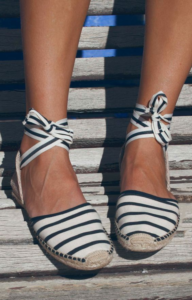
Did you know that the espadrille dates back as far as 1322 and that it was originally a peasant shoe worn by both men and women? The word espadrille is French and derives from the French Occitan language which refers to shoes being made with esparto, a wiry grass from the Mediterranean used to make rope.
Traditional espadrilles consisted of two pieces of canvas for the upper which was stitched down the sides and blanket stitched to the roped sole. These days of course there have been many variations to this style and espadrilles may be flat or heeled shoes with the toe cut out, open or closed-in back and ties around the ankle of either ribbon, leather or rope. They all have one feature in common though and that is the roped sole. The upper may be leather or the traditional canvas. They are made in Spain, France and Asia and are worn widely along the Mediterranean and French coasts.
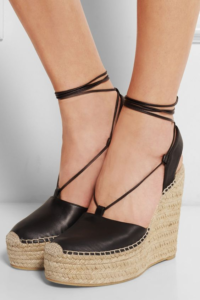
Interestingly, Yves Saint Laurent is responsible for the first wedged espadrille which was born after he met Spanish manufacturer Castaner at a Paris Trade Fair in the 1970s. Saint Laurent espadrilles are still popular today and they resurface year after year. Traditionally worn in Summer and Spring, the espadrille is the essential casual shoe for the warmer months of the year.
But what of the food? Well tapas it is, so my menu consisted of garlic prawns, potato and chorizo, olives and fish with romesco sauce.
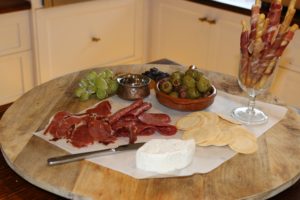
For dessert I tried my hand at Leche Frita which translates to fried milk.Not for the faint hearted or those on a diet but it is the weekend after all and the floaty dress is locked in. For those of you not afraid of a little deep frying, this recipe is a must!
Leche Frita
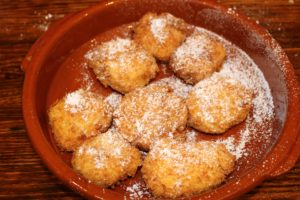
Note: Start this one the day before to allow the custard to set well before cooking.
Ingredients
¼ teaspoon lemon peel finely grated
2 eggs
1 cinnamon stick
½ cup cornstarch
¼ teaspoon nutmeg grated
Icing sugar for dusting at the end
½ cup of castor sugar
Oil for deep frying-Vegetable oil is probably best as it has a neutral flavour
¾ cup of breadcrumbs-I like to use panko to get a great crust
1 tablespoon of butter
3 cups of milk
Method
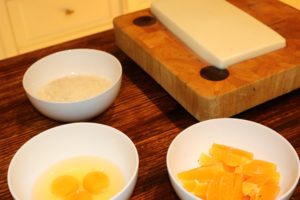
- Warm the milk over medium heat in a saucepan with the cinnamon stick.
- In a separate bowl whisk sugar, cornstarch and nutmeg to combine and then add to the warm milk. Remove the cinnamon stick at this point before the mixture thickens.
- Increase the heat to almost boiling point making sure to stir continuously and then add the lemon peel. Turn the heat off as soon as the mixture becomes thick. It should be a fairly stiff consistency.
- Mix in the butter.
- Pour into a greased or silicon tray and refrigerate for at least 3 hours. I like to do this the day before to ensure the custard has fully set.
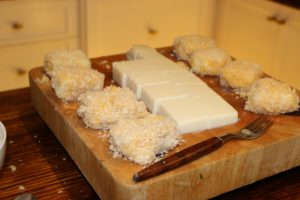
- Cut the cold custard into squares of about 4 cm.
- Dip the custard squares into some cornflour and then in beaten egg. Finally coat in the breadcrumbs.
- Pour oil into a saucepan and increase heat until the point when a small piece of bread turns golden.
- Fry the crumbed custard until just golden and then sprinkle with icing sugar.
- I like to serve this with orange wedges and mint to freshen the whole dish up a little.
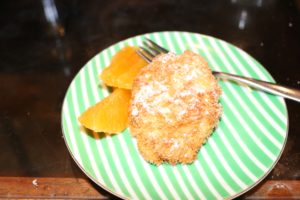
Well we hope you all have a great weekend. As we are at the tail end of our Summer it may be the last opportunity to wear your favourite espadrilles so why not take them out for a spin. Sangria anyone?
Until next time!
E & E


